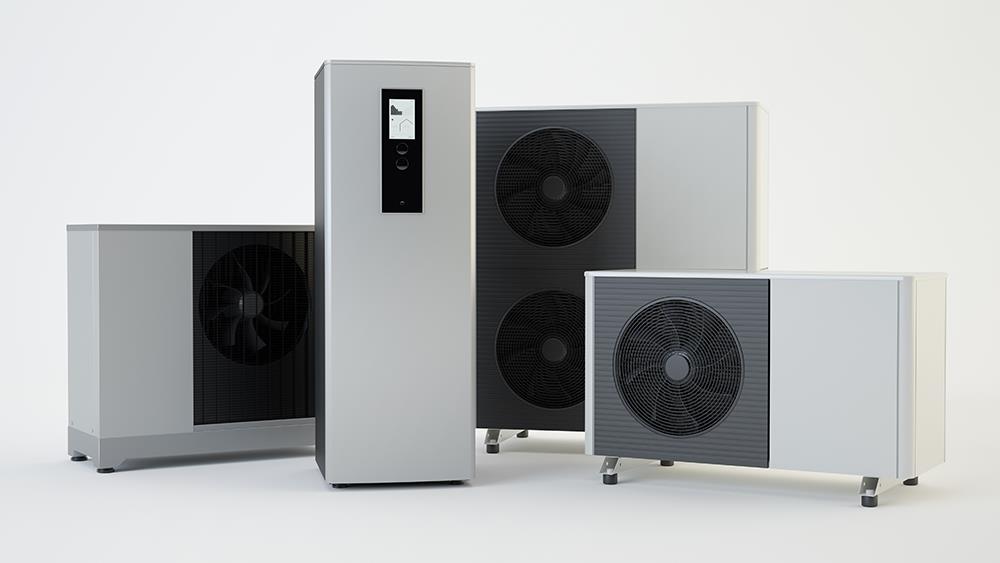

Increased policy support and incentives for heat pumps in light of high natural gas prices and efforts to reduce greenhouse gas emissions were key drivers behind the strong uptake, the IEA says.
In Europe, heat pumps enjoyed a record year, with sales growing by nearly 40%. In particular, sales of air-to-water models, which are compatible with typical radiators and underfloor heating systems, jumped by almost 50%.
In the United States, heat pump purchases exceeded those of gas furnaces. However, in China, the world’s largest heat pump market, sales remained stable amid a general slowdown of the economy.
Globally, heat pumps, when used as a main heating device, cover around 10% of heating needs in buildings today. This corresponds to over 100 million households, meaning that one in 10 homes that require substantial heating are served by heat pumps today.
However, many more households use heat pumps only part of the winter or as a supplementary source of heating in regions where they are mainly used for cooling buildings.
To align with all existing national energy and climate pledges worldwide, heat pumps will have to meet nearly 20% of global heating needs in buildings by 2030.
The world is almost on track to reach this milestone if new installations continue to grow at a similar rate globally as they did the last two years. However, sales need to expand by well over 15% per year this decade if the world is to achieve net-zero emissions by 2050.
Installations of heat pumps remain concentrated in new buildings and existing single-family homes. Multi-storey apartment buildings and commercial spaces will need to be a priority area if solid growth is to continue.
Energy efficiency retrofits also need to accelerate to ensure that new heat pumps installed in existing buildings are as efficient as possible and not oversized. This will lower upfront and operating costs for consumers and reduce strains on power systems, especially if combined with smart controls for flexible operation.
Across Europe, nearly three million heat pumps were sold in 2022, an increase of almost 40% compared with the previous year. Russia’s invasion of Ukraine fuelled this trend as natural gas and electricity prices rose significantly, encouraging consumers to switch to heat pumps, which are far more efficient than conventional heating technologies.
Last year, the European Commission also announced plans to double the deployment rate of heat pumps. Most EU countries provide financial incentives that make this target achievable. Some more nascent markets, such as Poland and Czechia, doubled in size last year, though Italy, France, and Germany accounted for almost half of all sales in Europe. In the Nordics, where heat pumps are a long-established heating solution, nearly five times as many units were sold per household than in the rest of Europe.
In terms of new sales, the Nordic and Baltic countries have the highest share of air-to-air units, which account for around 50% to 80% of installations. Similarly, purchases of such units are also high in Southern Europe. In Germany and Poland, air-to-water heat pumps are the technology of choice.
Hybrid systems, which combine heat pumps with gas boilers, are popular in Italy for instance, where they accounted for more than 40% of sales in the air-to-water segment in 2022. Ground and water-source heat pumps are the most efficient models – and the most expensive. The need for drilling works and additional space mean that they account for less than 10% of European sales today.
In France, heat pumps outsold fossil fuel boilers in buildings for the first time in 2022, coinciding with the first year of a national ban on gas boilers in new buildings.
While demand for fossil fuel boilers is declining in other major European countries, they still have a higher market share than heat pumps. In Germany and Italy, for example, there were twice as many fossil fuel boilers sold than heat pumps in 2022.
At the same time, there are proposals to phase out the most polluting technologies and fuels. Plans by the German government suggest that new heating systems must be largely based on renewables from 2024 onwards. Across Europe, seventeen countries have implemented or announced bans on installations of boilers that run exclusively on some form of fossil fuel.
Sales of air-sourced heat pump water heaters remained relatively stable at more than 1 million units sold. Around 40% of heat pumps worldwide are manufactured in China, making the country the largest producer and exporter of this technology, with most of its exports going to Europe.
Heat pumps are still largely absent from heating markets in Central Asia and some parts of Eastern Europe, where upfront costs remain a major barrier and many homes are connected to district heating networks. However, large-scale heat pumps are an effective option to decarbonise these networks, which remain heavily dependent on fossil fuels today.
If you'd like to keep up-to-date with the latest developments in the heating and plumbing industry, why not subscribe to our weekly newsletters? Just click the button below and you can ensure all the latest industry news and new product information lands in your inbox every week.